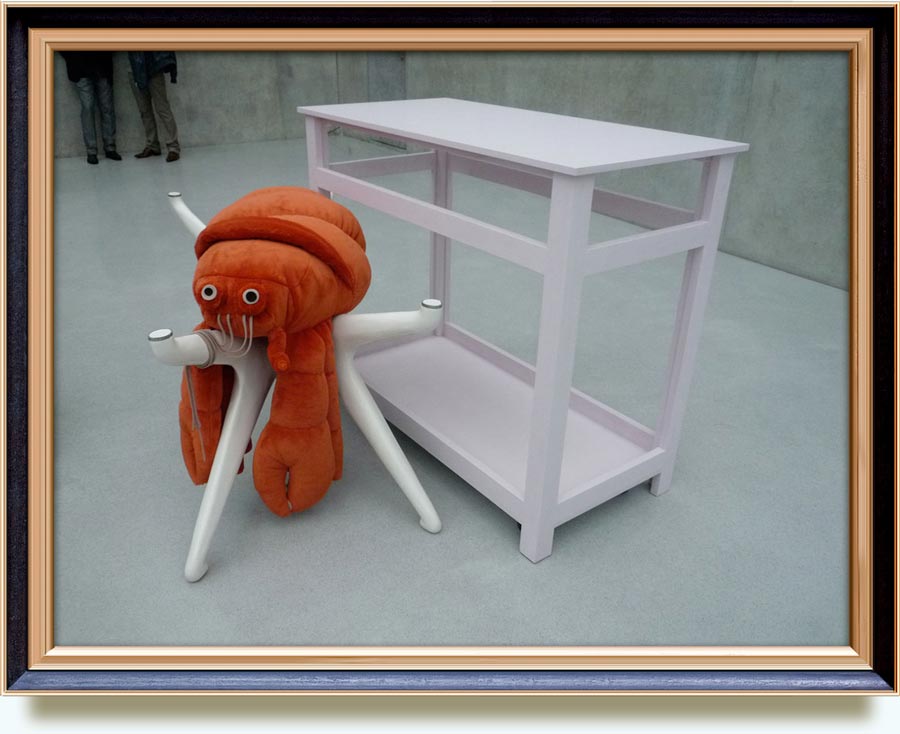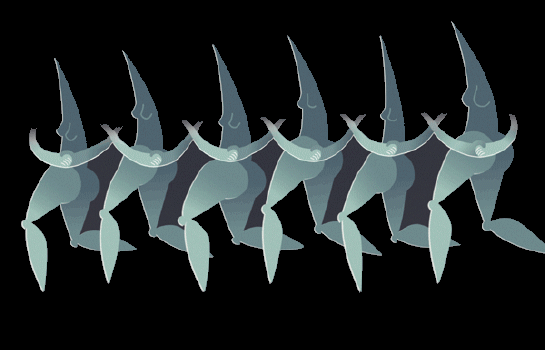Перцова Н.Н.
O стихотворении Хлебникова «И чтоб утроить веще Ы»
Имеется целый слой произведений Хлебникова, которые впервые напечатаны Н.Л. Степановым
1
и с той поры осторожно обходятся в последующих изданиях. Можно, конечно, солидаризироваться с Н.И. Харджиевым, едко высмеивавшим текстологические ошибки в “ретушированном” Степановым Хлебникове, однако даже неполное или неточное воспроизведение Степановым трудночитаемых хлебниковских рукописей может дать о них хотя бы некоторое представление и послужить импульсом для их последующего изучения. Как писал философ Зено Вендлер, „даже законченное исследование — это только начало”, и если начало положено, следует отдавать должное тому, кто это сделал.
Одной из таких спорных вещей является стихотворение, озаглавленное в пятитомнике «Ка...»:2 «И чтоб утроить вещь Ы...». Этот текст взят из рукописи мистерии «Лев».3
«И чтоб утроить вещь Ы...». Этот текст взят из рукописи мистерии «Лев».3 Уже в процитированном фрагменте публикации обнаруживается ряд ошибок. Две исправляются однозначно: у Хлебникова написано веще (первая гласная — “ять”, от ‘вещий’), а не ‘вещь’ (в старой орфографии слово писалось через “е”); в заглавии вместо предлога “К” следует читать “Ка” (имеется в виду египетский двойник личности). Третья неточность может быть исправлена лишь предположительно: после слова Ка в заглавии написано не сокращение “А...”, а достаточно длинное имя собственное, которое плохо поддается прочтению: скорее всего, это “Аранзиппа”, тогда Хлебников имел в виду Великого Могола Аурангзеба (персонаж, упоминаемый и в «Есире»). Заглавие перестает быть обращением к некоему неведомому лицу и становится указанием на того, от чьего имени произносится воинственная речь, следующая далее.
Уже в процитированном фрагменте публикации обнаруживается ряд ошибок. Две исправляются однозначно: у Хлебникова написано веще (первая гласная — “ять”, от ‘вещий’), а не ‘вещь’ (в старой орфографии слово писалось через “е”); в заглавии вместо предлога “К” следует читать “Ка” (имеется в виду египетский двойник личности). Третья неточность может быть исправлена лишь предположительно: после слова Ка в заглавии написано не сокращение “А...”, а достаточно длинное имя собственное, которое плохо поддается прочтению: скорее всего, это “Аранзиппа”, тогда Хлебников имел в виду Великого Могола Аурангзеба (персонаж, упоминаемый и в «Есире»). Заглавие перестает быть обращением к некоему неведомому лицу и становится указанием на того, от чьего имени произносится воинственная речь, следующая далее.
Более ранний, неоконченный вариант этого стихотворения находим в рукописи «Скуфья скифа. Мистерия»:4
Я вынул записную книжку и начал духам читать стихи.
Как хорошо, о чем молчится!
И только смерть тяжелая волчица!
Когда-то кинет мрачный взор
И костяной вонзит узор.
‹Одн›им я бросил кыш.
‹Др›угим я кинул брысь
А смерти крикнул цыц.
А эти что толпились ночью тополями
Храмовной стражей тишины
Вдруг малодушно пали ниц
И руку целовали мне крича
Бери возьми нас для бича
Плети в суровые ремни
Чтобы ускорить бег зарниц.
Суровые высокие жрецы —
[далее часть текста утрачена — Н.П.] Сказав вы меры сил
Стрибог ты стрий, детей
б‹е›ря сетей
В обеих хлебниковских рукописях стихотворение вплетено в канву незавершенного произведения, над которым Хлебников работал в 1916 – начале 1917 г., сложного многопланового целого (впоследствии Хлебников, вероятно, отнес бы его к жанру сверхповести), посвященного осаде трех множеств — времени, языка и толп. Опубликованные после смерти автора тексты «Ка2», «Лев», «Скуфья скифа» — это черновики (значительная часть авторских рукописей утрачена, в публикациях используются транскрипции, выполненные некогда Дм. Петровским и Г.О. Винокуром). В упоминавшейся выше рукописи «Льва» представлен план задуманного произведения в виде рисунка из двух групп соположенных треугольников, символизирующих его темы (названные кусочками). Левая группа включает три названия: «Лев», «Поэма 3 Ы» и «Осада неба»; правая — четыре названия: «Китаец», «Где Числобог», «Ка обратный» и «Посольство заморское». Несомненно, стихотворение «И чтоб утроить веще Ы» и должно было вырасти в «Поэму 3 Ы».
————————
Примечания 1
1 См.:
Хлебников В. Собрание произведений / Под ред. Н. Степанова. Тт. I–V. Л., 1928–1933.
 2
2 См.:
Хлебников В. Собрание произведений / Под ред. Н. Степанова. Т. II. С. 239.
 3
3 См.: РГАЛИ. Ф. 527. Оп. 1. Ед. хр. 33: 1.
 4
4 См.: РГАЛИ. Ф. 527. Оп. 1. Ед. хр. 109: 2 об.
Воспроизведено по:
Творчество В. Хлебникова и русская литература.
Материалы IX Международных Хлебниковских чтений 8–9 сентября 2005 г.
Издательский дом «Астраханский университет»; С. 102–104
Изображение заимствовано:
Cosima von Bonin (b. 1962 in Mombasa, Kenia. Lives and works in Germany).
Starfish and hermit crab.
Sewn textiles and white-enamelled metal.
Exhibition The Fatigue Empire, July 18 – October 3, 2010 in Kunsthaus Bregenz (KUB), Vorarlberg, Austria.
http://www.flickr.com/photos/produzentin/4828320324/
Cosima von Bonin is one of the most well-known artists of her generation. Especially since her participation in the last documenta, at which a large number of the works was spread over the entire course of the show, she is no longer an insider-tip and so-called artist’s artist. Nevertheless it is not easy to classify her artistic production. Even though in some of her works references to historical Conceptual Art and Minimal Art can be noticed, and critics like to cite her as an example of a feminist artist, her oeuvre eludes any straightforward label.
She first drew attention at the beginning of the 1990s when, instead of showing works of her own at her New York solo exhibition, she invited other producers of culture such as art critics, musicians, and artists to present their photos, paintings, or performance contributions. With her questioning of the function of the author, which clearly comes to expression in her early participatory gestures, sometimes she has intentionally, or unintentionally, directed herself against co-option by the art-system. If today, with canvas paintings made of found fabrics and cloths, or large textile mushrooms and cuddly toys, she controls this system or chooses to expose herself to it in a kind of over-affirmation, this is always associated with the stance that every work could be the last one and she could withdraw as an artist at any time. The titles, Relax — It’s only a Ghost or Roger and Out, describe this contradictory strength in a humorous, melancholy way.
The title of her exhibition for the Kunsthaus Bregenz, The Fatigue Empire, could also be understood in this way, just as if, from the outset, she wanted to deflate expectations associated with a large solo exhibition at a renowned exhibition institution. All the more surprising then is the multitude of works made especially for Bregenz which lays out the differentiated repertoire of Cosima von Bonin in an unusually epic density, starting with her large canvas paintings and spanning from textile sculptures and estranged reconstructions to voluminous installations. The architecture of the three floors of the KUB becomes a stage on which the textile and wooden figures seem to be actors — a move reinforced by soundtracks composed by Moritz von Oswald especially for Cosima von Bonin that can be heard at various points in the spaces of the KUB.
‹...› Anyone who thinks, however, that they can really come closer to Cosima von Bonin’s work through references to other cultural producers will experience at the Bregenz exhibition that, if at all, they constitute merely one facet of her creative work. For the understanding of her work, the specific choices of everyday objects estranged in their sizes and materials as well as their emotional and cultural connotations play as decisive a role as their formal shaping, their proportions, and combinations of color. And when Cosima von Bonin reconstructs a room in the Kunsthaus with its particular formal and significant characteristics on a slightly smaller scale or enrobes a car bursting with masculinity in red-and-white checked fabrics made in Vorarlberg, thus making it effeminate, worlds open up here provoking at one and the same time social, cultural, or even work-immanent readings.
That this Empire is in a fatigue state cannot really be believed, even when viewing the exhaustion of some of its inhabitants that is demonstrably put on show. Rather, this most comprehensive presentation to date of new works by Cosima von Bonin evidences the strength of an artist who, despite all self-doubt, knows exactly what she wants.
www.kunsthaus-bregenz.at/presse_bonin/Presseinformation_BONIN_E.pdf


![]()
![]()
![]()
